Dogwood red: varieties, planting and care
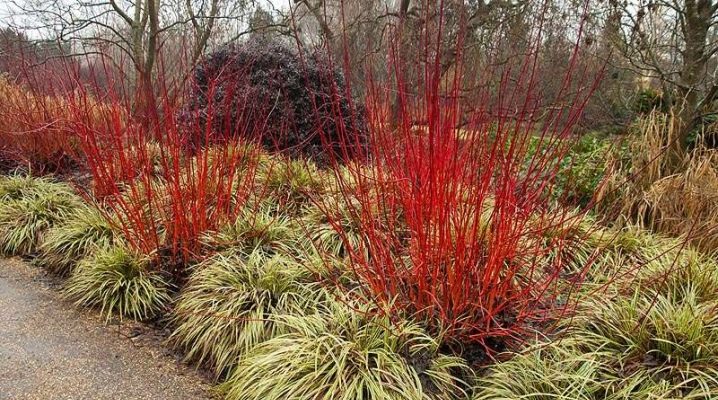
A beautiful well-groomed private plot always arouses admiration, it is a pleasure to spend time there for both the owners and guests. And every time gardeners do not get tired of experimenting, picking up all new specimens of trees, shrubs and flowers. Many people use different varieties of such a plant as red dogwood in landscape design, especially since planting and caring for it is easy even for novice gardeners.
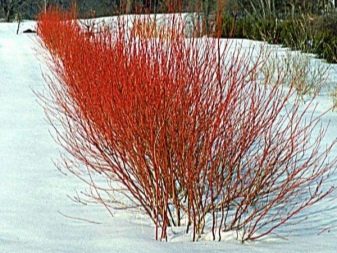
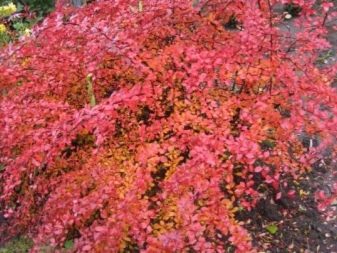
Shrub features
Derain is a shrub from the dogwood family. It grows in forests at the edges, and near rivers and lakes. It can grow up to four meters in its natural habitat. Shoots of a young shrub are flexible. They are green at first. But the closer autumn is, the redder their color. When all the shrubs shed their foliage and look less attractive, the turf remains bright. Its red stems stand out against the general background and continue to decorate the garden even in winter.
But his description is not limited to this. The leaves of the plant are oval, covered with hairs. In spring and summer, they have a dark green color, but by autumn they gradually turn red and towards winter they acquire a burgundy hue.
The leaves of the deren are quite large and can reach more than five centimeters in diameter. At the very end of spring, flowers of a cream or white shade appear on it, which delight with their beauty for almost a month.
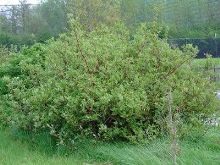

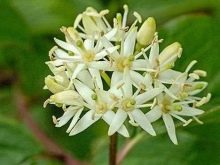
But to wait for flowering, you need to be patient. The first flowers appear on the shrub at the age of seven. With good care and a favorable climate, flowers reappear closer to autumn. In autumn, the shrub is covered with small black berries that should not be eaten. The hairs on the leaves turn red. That is why the shrub got its name - blood-red turf. A tree can grow in one place and feel good for 25 years.
Due to its decorative qualities, it is ideal for decorating hedges, various compositions, alpine slides. The shrub is very convenient in that it easily tolerates both drought and frosts of the middle zone. That is, it can be grown in many regions. It is unpretentious to the soil, the structure of the roots is such that there are many lateral branches. Many people use this quality of plants in order to strengthen the slopes.
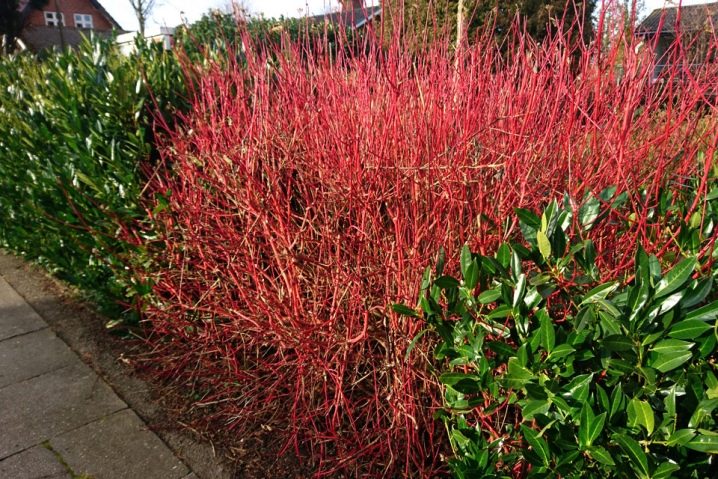
How to plant?
In order for the shrub to grow well, be bright and with a lush crown, it is recommended to choose places where there is a lot of sun for planting. In the shade, the plant, of course, will not die, but in beauty it will lose to its fellows growing in the light.
The red-leaved shrub looks especially advantageous against a background of contrasting color. It can be a gray stone fence, conifers that grow nearby.
For the first two or three years, the tree grows slightly, but intensive growth begins after three years. Then you can start forming the crown.
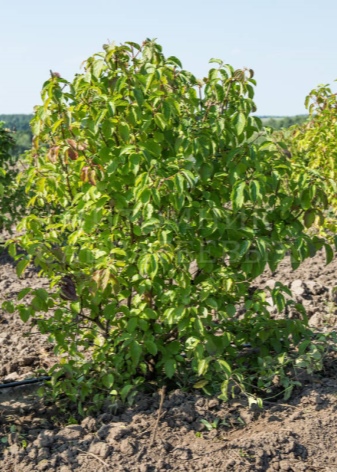
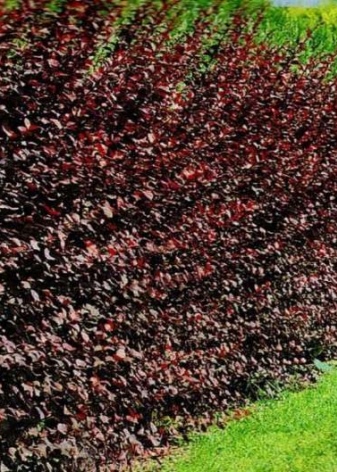
In order for the planting to be successful, and the tree to take root well, you need to add compost to the ground. Before starting planting, the seedling is placed in a bucket of water for a couple of hours, the roots are straightened out and well moistened.
Dig a hole at least half a meter deep. If the soil is too wet, stones and sand are placed on the bottom, which will serve as good drainage. After planting, the tree should be watered regularly as the soil dries.
The shrub can be planted both in autumn and spring.The main thing is to have time to do this in the fall before the first frost, so that the tree has time to take root. In the spring, the adaptation period passes faster.
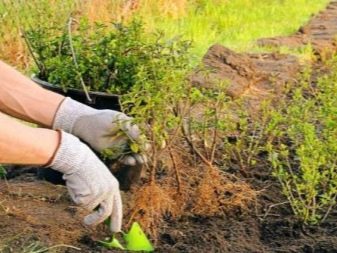

How to care?
Shrub care is not difficult. If summers are hot and dry, it needs weekly watering. If the tree is not watered on time, foliage can become dull and lethargic. When watering is resumed, the turf revives again. The main thing is not to miss watering so often. If the weather is normal and the sun is interspersed with rain, then there is no need to water it.
The bush does not need special dressing and frequent fertilizers, but they will be useful for him too. Other trees still grow on the site, which require more careful care, along with them, you can feed the turf. It is believed that dogwood is resistant to diseases and pests. Therefore, he does not need numerous preventive spraying, except in autumn and spring (along with other shrubs).
This shrub is considered cold-hardy. Therefore, they do not cover it especially for the winter. Many gardeners claim that it tolerates frosts up to 35 degrees. But all this applies to older trees. Young seedlings after autumn pruning should be covered by preparing mulch and special covering material for this, which can be purchased in specialized stores.

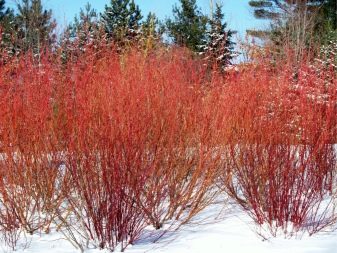
Pruning and reproduction
Seriously pruning a plant should be started in the fourth year of life. This must be done without fail, otherwise the shrub will look abandoned and unattractive. Old shoots must be removed, unnecessary growth around the roots must be removed, and in addition, branches must be cut in order to form a crown.
The shrub is propagated by cuttings, layering and dividing the bush, as well as seeds.
The seeds are placed in the soil in the fall, seedlings will appear in the spring, the sprouts need to be well watered, after a while they are planted.
But with such cultivation, a real strengthened tree will turn out only after eight years. The process of such cultivation is very long and not always successful.

The easiest way is to propagate the bush by layering. A long enough shoot, bent to the ground, sprinkle with earth and fix there. In the fall, the roots will already form, and in the spring it can be planted elsewhere.
Cutting is also a more affordable way. Shoots are cut off with a sharp knife at the beginning of summer, they are placed in the ground in a greenhouse. And only when they take root well, can they be planted in open ground. This usually happens in the fall.
In order to propagate the plant by division, you need to dig it out completely when the shrub grows strongly.Then the shrub is carefully divided into several bushes and planted in separate holes at a distance of at least a meter from each other.
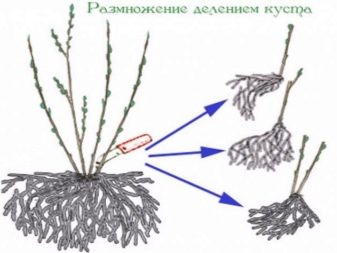

Varieties
Derain red is a very original plant that many gardeners love. But he also has several varieties that have their own differences, which allows the gardener to choose his own, which is more suitable. There are many varieties, among them variegated, white, Canadian, Japanese, Elegantissima, Sibirica, Sibirica Variegata, Aurea. The most popular varieties are Compressa and Orange Winter.
"Compress" refers to compact varieties, reaches only one meter, the highest specimens reach two. Owners of small plots appreciate it precisely for these forms. This variety does not bloom, but this does not interfere with actively using it in design. The lack of flowers is compensated by glossy emerald leaves in summer and bright red shoots in autumn.
The crown is usually lush, the shrub grows slowly. But it can be successfully used in the design of alpine slides, next to stones, junipers, flowers, it looks great.
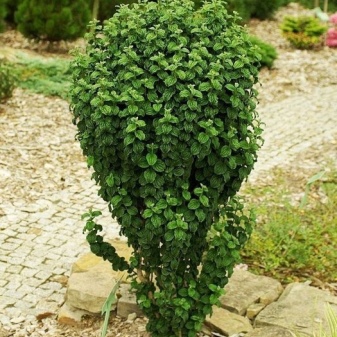
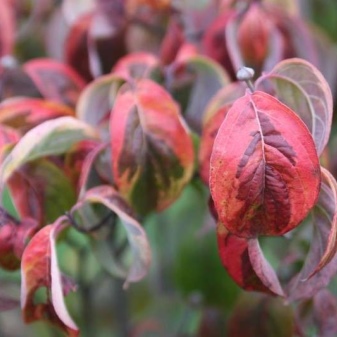
"Orange winter" is a more spreading bush, and its height is usually at least two meters. Its shoots have an orange tint, the leaves are dark green, in summer the bushes are decorated with white spherical flowers. All this makes it attractive at any time of the year.He will always decorate the garden, in spring, summer, autumn and even winter. And every season his attire will be different. It can be used as a hedge and decoration of various compositions in combination with other shrubs and flowers.

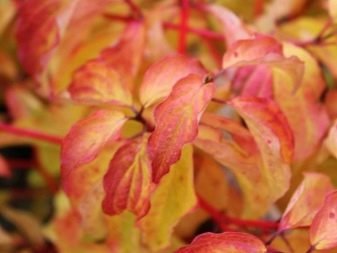
Both varieties, like many others, do not need much maintenance. The sun and timely watering in the absence of rain is all that is needed for the shrub to please gardeners with its appearance.
For an overview of the red dogwood plant, see the video below.

































































The comment was sent successfully.